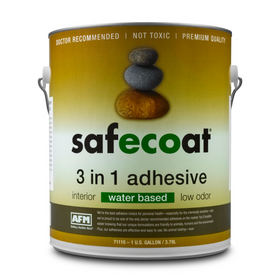
3D-Printed Homes and Neighborhoods
Last Updated: Mar 10, 2025Imagine living in a leaky one-room shack with seven of your family members. Your home has no indoor plumbing, minimal privacy, little sanitation, and you have a constant worry of natural disasters like an earthquake. This living condition is Candelaria Hernández's reality, where she lives in Mexico. These issues are a reality for many more in the surrounding area. A survey of over 500 local families showed that 74% of households did not feel safe in their current housing conditions, which significantly impacts their quality of life. Fortunately for Candelaria's family and 50 others, they will soon be residents of the world's first 3D-printed neighborhood.
Table of Contents
- How Can You Print a Home?
- First 3D-Printed Neighborhood
- The Future of Housing: 3D Printing

At 500 square feet each, the 50 homes in the neighborhood will each incorporate a living room, two bedrooms, one bathroom, and a kitchen - a notable upgrade from the typical shacks in the immediate area. The homes will be seismically sound to ensure the safety of its occupants in an area of Mexico that is at high risk of earthquakes.
This 3D-printed neighborhood is made possible through a partnership formed by three organizations. New Story, a non-profit dedicated to ending homelessness, ICON, a construction technologies company dedicated to revolutionizing homebuilding, and ÉCHALE, a non-profit partner in Mexico focused on affordable housing teamed up to work on this exciting project. And, of course, they have a 33-foot-long 3D printer to thank for the homes themselves.

How Can You Print a Home?
3D-printing has become quite popular in recent years. 3D-printing is the process of making three dimensional solid objects from a single digital file. This process is achieved through an 'additive process' by laying down successive layers of material until an object is created.

An object is built on a computer using 3D modeling software, which is then 'sliced' horizontally and sent to a 3D printer for layer by layer printing. A 3D printer can use plastic, metal, nylon, resin, and many other materials for printing. Popular items that are commonly 3D printed today include dental products, prosthetics, architectural scale models, and small-scale home design features like lamps.
More and more, discussions have transitioned towards the role of 3D-printing in the housing industry. Walls, doors, and windows can be easily 3D-printed. Whole houses are a relatively new ambition in the 3D-printing world, but there have been strides in this innovative direction. Earlier this year, the first fully-permitted 3D-printed home in the United States was completed. Many believe that 3D-printing is the future of construction.
This isn't 10% better; it's ten times better. - Jason Ballard, Co-founder at ICON
He described the benefits of 3D printing as:
- Continuous thermal envelope
- High thermal mass
- Near zero-waste
- Speed
- Significantly expanded design palette
- Improved resiliency, and
- the possibility of a quantum leap in affordability.
This industry is snowballing; Acumen Research and Consulting forecast the global 3D-printing market to reach $41 billion by 2026 - with an annual growth rate of 20% in the next six years.

First 3D-Printed Neighborhood
While there have been explorations in the 3D-printed housing industry on small scales, Mexico will be home to the first 3D-printed neighborhood of 50 houses. Past experiments in this realm have focused on individual houses in controlled environments.
The world's first 3D-printed neighborhood is in Tabasco, a Mexican state bordering Guatemala that is at a relatively high risk of earthquakes. As such, the design needed to go through multiple structural engineering tests to ensure the homes would be seismically sound.
The flexibility of the 3D-printer allows the homes to be printed on-site. By monitoring local weather conditions, the printer can adjust the concrete mixture to ensure proper consistency.

The first two homes in the neighborhood were printed in a total of 24 hours. Local construction workers were then hired to finish details within the homes that could not be printed. Not all 50 homes in the neighborhood will be 3D-printed, however. Some homes will be built with EcoBlocks, a building technology made of 90% earth matter, and that is two times stronger than traditional concrete blocks. Data will be collected to understand the long-term impacts of both building approaches.
Building Materials
Shop high-performance building materials that are vetted for benefits to your health, your pocketbook, and the planet.

AFM Safecoat Almighty Adhesive Case of 12
AFM Safecoat
In Stock

AFM Safecoat 3 in 1 Adhesive
AFM Safecoat
In Stock

Quickscrews Cabinet Install Screws
Quickscrews
In Stock

AutoSlide Automatic Sliding Door System
Autoslide
Out of Stock
2 Colors

Autoslide Smart Tag Pet Door Kit
Autoslide
Out of Stock
2 Colors

AutoSlide Elite iLock Smart Tag Pet Door System
Autoslide
Out of Stock
2 Colors

Quickscrews Pan Head Pocket Hole Screws
Quickscrews
In Stock

Autoslide Elite Smart Tag Pet Door Kit
Autoslide
Out of Stock
2 Colors

Autoslide Motion Activated Pet Door System
Autoslide
Out of Stock
2 Colors

Quickscrews Square Flat Head Wood and Particle Board Screws
Quickscrews
In Stock

The Future of Housing: 3D Printing
By 3D-printing homes, issues of homelessness can be addressed on a global scale. ICON is working in the United States to address homelessness with a community of 400-square foot homes that will be completed in early 2020 in Austin, Texas.
The potential of 3D home printing is not necessarily limited to affordable housing. We can use 3D-printing to address housing issues of sustainability and resiliency.
Verónica Contreras, the Foundation Director of ÉCHALE, says that 3D printing technology is key to reducing the labor required to make affordable housing. And, she says: "The fact that this technology is being used to help the people with the biggest social gap turns it into a humanized technology."
Maria Saxton
Located in Roanoke, Virginia, Maria Saxton holds a Ph.D. in Environmental Design and Planning from Virginia Tech. She works as an Environmental Planner and Housing Researcher for a local firm specializing in Community Planning, Architecture, Landscape Architecture, and Historic Preservation. Her dissertation explored the environmental impacts of small-scale homes. She serves as a volunteer board member for the Tiny Home Industry Association.

